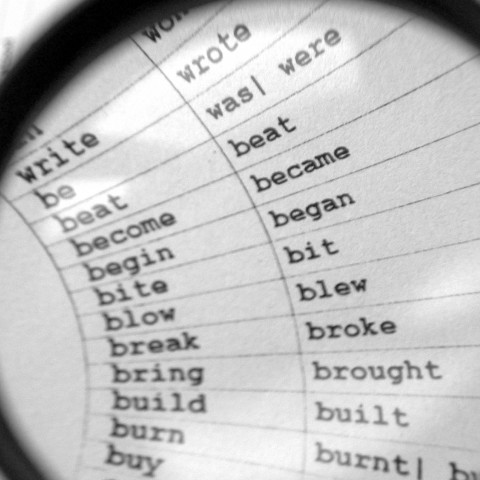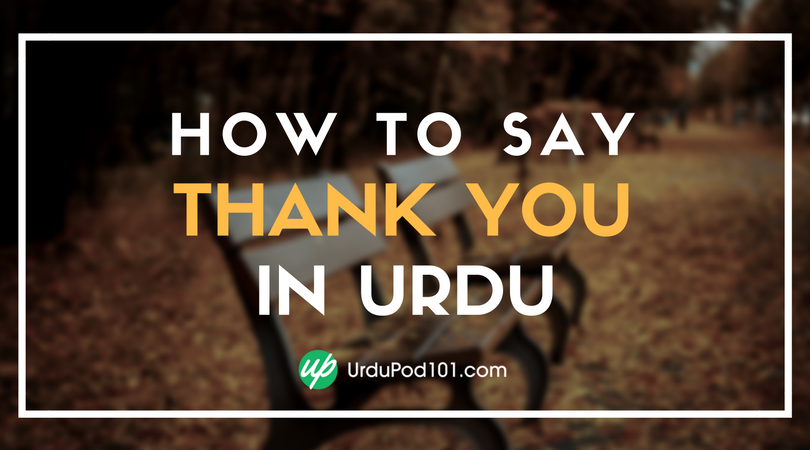
In this article, we’re going to cover one of the most crucial topics in Urdu language learning: Urdu verb conjugation. Having learned the basics of Urdu verbs, you may be able to hold basic conversations; however, in order to become a non-native advanced Urdu expert, you need to strengthen your grip on verb conjugation in Urdu. You should also become familiar with Urdu grammar tenses.
- → Before continuing, we recommend that you read our article on the 100+ Must-Know Urdu Verbs and check out our lesson on the Top 25 Urdu Verbs for Beginners.
 Table of Contents
Table of Contents
- Why is it Important to Study Urdu Verb Conjugation?
- What is Conjugation?
- Verb Groups
- Bonus for the Ambitious Learners
- Some Rare Irregular Urdu Verbs
- Rehearse with Us
- Conclusion
1. Why is it Important to Study Urdu Verb Conjugation?

To learn about conjugation in Urdu is a Herculean task. Nevertheless, with enough motivation, you really can gain a strong understanding of this important topic. But why should you?
If you want to master the Urdu language, you absolutely need to understand Urdu verb conjugation. This is especially important when trying to converse with someone in an Urdu-speaking country like Pakistan. If you don’t know anything about Urdu verb conjugation, you’ll have a miserable time trying to communicate.
Finally, when you learn about conjugation, you’re able to study many other aspects of Urdu grammar at the same time. This includes things like tenses, moods, and persons.

2. What is Conjugation?

When you conjugate a verb in Urdu, you’re changing that verb to show tense, person, number, and mood. In Urdu, the word for “conjugation” is فعل کی گردان کرنا (fail ki girdaan kerna).
Now, let’s look through each of the different things that affect conjugation in Urdu, starting with the person.
1- Person
In Urdu, we have six different persons:
- واحد متکلم (wahid mutkalim) — first person singular
- جمع متکلم (jama mutkalim) — first person plural
- واحد حاضر (wahid hazir) — second person singular
- جمع حاضر (jama hazir) — second person plural
- واحد غائب (wahid ghaeb) — third person singular
- جمع غائب (jama ghaeb) — third person plural
Study the Urdu conjugation chart below to better understand how the person affects conjugation.
| First person singular واحد متکلم | میں (mei) | “I” |
| Second person singular واحد حاضر | تم / آپ (tum) / (aap) | “you” (informal) / “you” (formal) |
| Third person singular واحد غائب | وہ / اس نے (woh) / (uss nay) | “he” or “she” |
| First person plural جمع متکلم | ہم (hum) | “we” |
| Second person plural جمع حاضر | آپ (aap) | “you” |
| Third person plural جمع غائب | وہ / انھوں نے (who) / (unho nay) | “they” for both male and female |
In the Urdu language, a verb almost always conjugates according to the person. Here’s an example of what this looks like:
- میں کھاتا ہوں
mei khata hun.
“I eat.”
- ہم کھاتے ہیں۔
hum khatay hain.
“We eat.”
- تم کھاتے ہو۔
tum khatay ho.
“You eat.”
- وہ کھاتے ہیں۔
woh khatay hain.
“They eat.”
2- Mood
Grammatical mood depicts the intention or feeling of a specific action. Below you’ll find what the verb “play” looks like in each mood.
I- Indicative
- میں کھلیتا ہوں
mei khelta hun.
“I play.”
II- Subjunctive
- کاش میں کھیلتا۔
kaash mei khelta.
“I wish that I could play.”
III- Conditional
- اگر تم نہ اٹھاتے تو بچہ کھیلتا رہتا۔
agar tum na uthatay to bacha khelta rehta.
“The baby might play if you do not pick him up.”
IV- Imperative
- روزانہ فٹبال کھیلو۔
rozana football khelo.
“Play football daily.”
“Play football daily.”
V- Infinitive
- کھیلنا
Khelna
“To play”
3- Voice
Grammatical voice is another aspect that affects Urdu verb conjugation. The two voices are active and passive, which we’re sure you’re familiar with. Here’s an example:
I- Active Voice
- وہ فٹبال کھیلے۔
woh football khelay.
“They played football.”
II- Passive Voice
- انھوں نے فٹبال کھیلا۔
unho nay football khela.
“Football was played by them.”
4- Gender

In Urdu verb conjugation, grammatical gender also plays an important role. The two genders in Urdu are masculine and feminine. For example:
I- Masculine
- میں کالج جاتا ہوں۔
mei college jata hun.
“I go to college.”
II- Feminine
- میں کالج جاتی ہوں۔
mei college jati hun.
“I go to college.”
In the example sentences, the base form of the verb جانا (jana) changed based on gender. In the first sentence, جاتا ہوں (jata hun) is used to denote the masculinity of the subject; in the second sentence, جاتی ہوں (jati hun) is used to denote the femininity of the subject.
5- Tenses
Finally, the tenses also affect conjugation in Urdu. Let’s take a look:
- فعل حال مطلق (fail haal mutliq) — Present Indefinite
- فعل ماضی مطلق (fail maazi mutliq) — Past Indefinite
- فعل مستقبل مطلق (fail mustaqbil mutliq) — Future Indefinite
- فعل حال جاری (fail haal jari) — Present Continuous
- فعل ماضی جاری (fail maazi jari) — Past Continuous
- فعل مستقبل جاری (fail mustaqbil jari) — Future Continuous
- فعل حال مکمل (fail haal mukammal) — Present Perfect
- فعل ماضی مکمل (fail maazi muakaaml) — Past Perfect
- فعل مستقبل مکمل (fail mustaqbil mukammal) — Future Perfect
- فعل حال مکمل جاری (fail haal mukammal jari) — Present Perfect Continuous
- فعل ماضی مکمل جاری (fail maazi muakammal jari) — Past Perfect Continuous
- فعل مستقبل مکمل جاری (fail mustaqbil mukammal jari) — Future Perfect Continuous
Don’t worry too much about memorizing all of the tenses above. You can get along just fine by simply grouping verbs into three main tenses:
- زمانہ ماضی (zamana maazi) — Past Tense
- زمانہ حال (zamana haal) — Present Tense
- زمانہ مستقبل (zamana mustaqbil) — Future Tense
3. Verb Groups

Okay, now we’re going to look at Urdu verb groups based on verb endings. In the following sections, we’ll provide you with several Urdu verb conjugation charts to help you better understand how conjugation works within each group.
For your convenience, in the following examples, we’ll use a single Urdu verb: لکھنا (likhna), meaning “to write.” This will help you understand the formation of different Urdu verb conjugations more easily.
1- Verbs with تا ہے / تی ہے / تے ہیں / تاہوں / تی ہو (ta hai / ti hai / tay hain / ta hun / ti ho) at the end
First, we’ll look at an Urdu verb conjugation chart explaining the ending words of the present simple tense. In this case, the sentence in Urdu will always end with a verb having تا ہے / تی ہے / تے ہیں (ta hai / ti hai / tay hain) at the end.
| Gender | 1st person singular واحد متکلم | 1st person plural جمع متکلم | 2nd person singular واحد حاضر | 2nd person plural جمع حاضر | 3rd person singular واحد غائب | 3rd person plural جمع غائب |
| Masculine | میں لکھتا ہوں۔ mei likhta hun. “I write.” | ہم لکھتے ہیں۔ hum likhtay hain. “We write.” | تم لکھتے ہو۔ tum likhtay ho. “You write.” | آپ لکھتے ہیں۔ aap likhtay hain. “You write.” | وہ لکھتا ہے۔ woh likhta hai. “He writes.” | وہ لکھتے ہیں۔ woh likhtay hain. “They write.” |
| Feminine | میں لکھتی ہوں۔ mei likhti hun. “I write.” | ہم لکھتی ہیں۔ hum likhti hain. “We write.” | تم لکھتی ہو۔ tum likhti ho. “You write.” | آپ لکھتی ہیں۔ aap likhti hain. “You write.” | وہ لکھتی ہے۔ who likhti hai. “She writes.” | وہ لکھتی ہیں۔ woh likhti hain. “They write.” |
2- Verbs ending with ا / یا (alif / ya)
Below is another Urdu verb conjugation chart that shows the Urdu verb in the past simple tense. The ending words of the verb, in this case, are ا /یا (alif / ya).
| Gender | 1st person singular واحد متکلم | 1st person plural جمع متکلم | 2nd person singular واحد حاضر | 2nd person plural جمع حاضر | 3rd person singular واحد غائب | 3rd person plural جمع غائب |
| Masculine | میں نے لکھا۔ mei nay likha. “I wrote.” | ہم نے لکھا۔ hum nay likha. “We wrote.” | تم نے لکھا۔ tum nay likha. “You wrote.” | آپ نے لکھا۔ aap nay likha. “You wrote.” | اس نے لکھا۔ uss nay likha. “He wrote”. | انھوں نے لکھا۔ unho nay likha. “They wrote.” |
| Feminine | میں نے لکھا۔ mei nay likha. “I wrote.” | ہم نے لکھا۔ hum nay likha. “We wrote.” | تم نے لکھا۔ tum nay likha. “You wrote.” | آپ نے لکھا۔ aap nay likha. “You wrote.” | اس نے لکھا۔ uss nay likha. “She wrote.” | انھوں نے لکھا۔ unho nay likha. “They wrote.” |
3- Verbs ending with ے گا / گے (ye ga/gay)
By removing the نا from the end of the infinitive and replacing it with ے گا/گے (ye ga/gay), you’ll get the future simple tense in the Urdu language. This verb group will help you to talk about future plans with others. Study the chart below to see how this works.
| Gender | 1st person singular واحد متکلم | 1st person plural جمع متکلم | 2nd person singular واحد حاضر | 2nd person plural جمع حاضر | 3rd person singular واحد غائب | 3rd person plural جمع غائب |
| Masculine | میں لکھوں گا۔ mei likhon ga. “I will write.” | ہم لکھیں گے۔ hum likhain gay. “We will write.” | تم لکھو گے۔ tum likho gay. “You will write.” | آپ لکھیں گے۔ aap likhain gay. “You will write.” | وہ لکھے گا۔ woh likhay ga. “He will write.” | وہ لکھیں گے۔ woh likhain gay. “They will write.” |
| Feminine | میں لکھوں گی۔ mei likhon gi. “I will write.” | ہم لکھیں گی۔ hum likhain gay. “We will write.” | تم لکھو گی۔ tum likho gi. “You will write.” | آپ لکھیں گی۔ aap likhain gi. “You will write.” | وہ لکھےگی۔ woh likhay gi. “She will write.” | وہ لکھیں گی۔ woh likhain gi. “They will write.” |
As explained earlier, the basic purpose of using the single infinitive لکھنا (likhna), or “to write,” is to show you how the different conjugations work on the same verb. If you successfully learn the basic rules and groups of Urdu conjugations, you’ll be able to utilize them effectively in your Urdu reading, writing, and conversations.
4. Bonus for the Ambitious Learners

In order to bring clarity and depth to the topic of Urdu verb conjugation, study the Urdu verb conjugation chart below. It shows the conjugation of لکھنا (likhna) for all tenses. This is for the learners who are ready and willing to go a step further.
| Simple Present | Simple Past | Simple Future |
| لکھتا ہے likhta hai “Writes” | لکھا likha “Wrote” | لکھے گا likhay ga “Will write” |
| Present Continuous | Past Continuous | Future Continuous |
| لکھ رہا ہے likh raha hai “Is writing” | لکھ رہا تھا likh raha tha “Was writing” | لکھ رہا ہو گا likh raha ho ga “Will be writing” |
| Present Perfect | Past Perfect | Future Perfect |
| لکھ چکا ہے likh chuka hai “Has written” | لکھ چکا تھا likh chuka tha “Had written” | لکھ چکا ہو گا likh chuka ho ga “Will have written” |
| Present Perfect Continuous | Past Perfect Continuous | Future Perfect Continuous |
| لکھ رہا ہے likh raha hai “Has been writing” | لکھ رہا تھا likh raha tha “Had been writing” | لکھ رہا ہو گا likh raha ho ga “Will have been writing” |
5. Some Rare Irregular Urdu Verbs

Like all languages, Urdu has a few irregular verbs of its own. Fortunately, there aren’t very many of these for you to learn. Below, we’ll cover two verbs that have odd conjugations in the past tense.
- جانا
Jana
“To go”
The verb جانا (jana) conjugates normally, except in the past case. You can see this change in the table below.
| Gender | 1st person singular واحد متکلم | 1st person plural جمع متکلم | 2nd person singular واحد حاضر | 2nd person plural جمع حاضر | 3rd person singular واحد غائب | 3rd person plural جمع غائب |
| Masculine | میں گیا۔ mei gaya. “I went.” | ہم گئے۔ hum gaye. “We went.” | تم گئے۔ tum gaye. “You went.” | آپ گئے۔ aap gaye. “You went.” | وہ گیا۔ woh gaya. “He went.” | وہ گئے۔ woh gaye. “They went.” |
| Feminine | میں گئی ۔ mei gayi. “I went.” | ہم گئیں۔ hum gayein. “We went.” | تم گئی۔ tum gayi. “You went.” | آپ گئیں۔ aap gayein. “You went.” | وہ گئی۔ woh gayi. “She went.” | وہ گئیں۔ woh gayein. “They went.” |
- کرنا
Kerna
“To do”
Similarly, the verb کرنا (kerna) will conjugate normally except in the past case. You can see this change in the table below.
| Gender | 1st person singular واحد متکلم | 1st person plural جمع متکلم | 2nd person singular واحد حاضر | 2nd person plural جمع حاضر | 3rd person singular واحد غائب | 3rd person plural جمع غائب |
| Masculine | میں نے کیا۔ mei nay kiya. “I did.” | ہم نے کیا۔ hum nay kiya. “We did.” | تم نے کیا۔ tum nay kiya. “You did.” | آپ نے کیا۔ aap nay kiya. “You did.” | اس نے کیا۔ uss nay kiya. “He did.” | انھوں نے کیا۔ unho nay kiya. “They did.” |
| Feminine | میں نے کیا۔ mei nay kiya. “I did.” | ہم نے کیا۔ hum nay kiya. “We did.” | تم نے کیا۔ tum nay kiya. “You did.” | آپ نے کیا۔ aap nay kiya. “You did.” | اس نے کیا۔ uss nay kiya. “She did.” | انھوں نے کیا۔ unho nay kiya. “They did.” |
6. Rehearse with Us
Having learned the basics of Urdu verb conjugation, it’s crucial that you practice your skills and test your knowledge.
1- Conduct Multiple Practice Sessions Yourself
Become the master of your own destiny by practicing Urdu verb conjugation yourself. The best way to start is to pick up a few Urdu verbs from different resources available on UrduPod101.com and use them by imagining several day-to-day situations. Don’t be afraid of making mistakes, because every mistake will take you one step closer to your destination.
2- Quiz
Now, here’s a quiz on Urdu verb conjugation! Give the correct conjugation of each verb for the examples below.

1. وہ اچھا گانا ـــــــــــــــــ ۔
woh acha gana ________ .
“She sings well.”
The verb to be used in the sentence above is گانا.
2. جلد ہی تم ایک اچھی خبر ــــــــــــــــ۔ ۔
jald he tum aik achi khabar _____________ .
“You will listen to the good news soon.” (when addressing a man)
The verb to be used in the sentence above is سننا.
3. تم ایک غلطی ــــــــــــــــــــــــــ ۔
tum ek ghalti ____________ .
“You were repeating a mistake.” (male speaker)
The verb to be used in the sentence above is دوہرانا.
4. میں جاپان ــــــــــــــــــ ۔
mei Japan _________.
“I went to Japan.” (male speaker)
The verb to be used in the sentence above is جانا.
5. وہ مدد ـــــــــــــــــ ۔
woh madad mang raha hai.
“He is asking for help.”
The verb to be used in the sentence above is مانگنا.
If you’ve hit the bull’s eye, congratulations! If you’re confused about the correct answers, though, follow the quiz key below.
3- Key to Quiz
1. وہ اچھا گانا گاتی ہے۔
(Present Simple Tense)
2. جلد ہی تم ایک اچھی خبر سنو گے۔
(Future Simple Tense)
3. تم ایک غلطی دوہرا رہے تھے۔
(Past Continuous Tense)
4. میں جاپان گیا۔
(Past Simple Tense)
5. وہ مدد مانگ رہاہے۔
(Present Continuous Tense)
If you’re still a bit confused, feel free to consult the charts and tables from this article. These will empower you to find out the logic behind each answer. You can also reach out to us in the comments if you still have questions!
7. Conclusion
In this article, you’ve learned about Urdu verb conjugation with various illustrations and examples. Hopefully, you found all the details that you wished for. Nonetheless, if we missed anything, let us know! We’ll give you that information as soon as possible.
In addition, visiting UrduPod101.com is a must. We have tons of Urdu language learning resources, so if you haven’t explored it thoroughly yet, be sure to do so soon. You’ll get access to sumptuous knowledge and information pertaining to the Urdu language.
Very Happy Urdu Learning!













